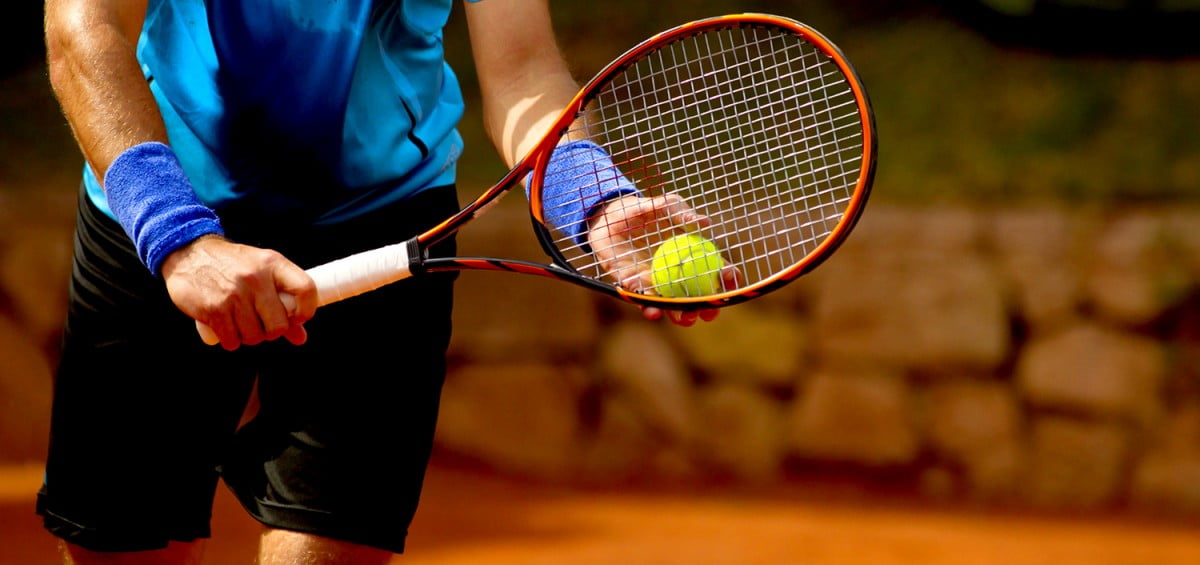
TENNIS ELBOW
At Northern Spinal & Sports Injury Clinic, our Physiotherapist and Osteopaths are very effective in the treatment of tennis elbow.
Lateral epicondylitis known as tennis elbow is a condition where the outer part of the elbow becomes sore and tender. While the common name “tennis elbow” suggests a strong link to racquet sports, this condition can also be caused by sports such as swimming and climbing, the work of manual workers and waiters, as well as activities of daily living.
Tennis elbow is an overuse injury occurring in the lateral side of the elbow region, but more specifically it occurs at the common extensor tendon that originates from the lateral epicondyle. The acute pain that a person might feel occurs as one fully extends the arm.
What to look out for
- Pain on the outer part of elbow
- Point tenderness over the lateral epicondyle – a prominent part of the bone on the outside of the elbow
- Gripping and movements of the wrist hurt, especially wrist extension and lifting movements
- Activities that use the muscles that extend the wrist are very painful
- Morning stiffness
How do we diagnose tennis elbow?
To diagnose tennis elbow, the Osteopath or Physiotherapist performs a number of clinical tests in which pressure is placed on the affected area while the patient is asked to move the elbow, wrist, and fingers. X-rays are used to confirm and distinguish possibilities of existing causes of pain that are not related to Tennis Elbow, such as fracture or arthritis. Diagnostic ultrasound and MRI are other valuable tests to help facilitate a definitive diagnosis.
The diagnosis is made by clinical signs and symptoms, which are both discrete and have certain characteristics. With the elbow fully extended, there are points of tenderness over the affected point on the elbow, which is the origin of the extensor carpi radialis brevis muscle from the lateral epicondyle (extensor carpi radialis brevis origin).
Depending upon the severity and quantity of multiple tendon injuries that are built up, the extensor carpi radialis brevis may not be fully healed by conservative treatment. There are four stages of lateral epicondylitis, showing the introduction of permanent damage.
- Inflammatory changes that are reversible
- Non-reversible pathologic changes to origin of the extensor carpi radialis brevis muscle
- Rupture of ECRB muscle origin
- Secondary changes such as fibrosis or calcification
Treatment options
Osteopathy and Physiotherapy
There are several recommendations regarding prevention, treatment, and avoidance of recurrence that are largely speculative including stretches and progressive strengthening exercises to prevent re-irritation of the tendon and other exercise measures.
Evidence suggests that joint mobilisation with movement directed at the elbow resulted in reduction in pain and improved function. Positive results have been found with Osteopathic manipulation directed at the cervical spine. Low level laser therapy administered at specific doses and wavelengths directly to the lateral elbow tendon insertions offers short-term pain relief and less disability in LET, both alone and in conjunction with an exercise regimen. Our clinic also utelises electro-therapeutic modalities that have been very effective.
Medication
Typical non-steroidal anti-inflammatory drugs (NSAIDs) to relieve lateral elbow pain in the short term. Corticosteroid injection are effective in the short term. However, we must be mindful of this treatment as complications from repeated steroid injections include skin problems and fat atrophy leading to indentation of the skin around the injection site. It can also lead to further degeneration of the tendon and decrease the healing capacity of the region.
Shockwave therapy
Our Osteopaths and Physiotherapist in Reservoir have found that using shockwave therapy can accelerate the healing process for tennis elbow. ESWT, also known as Shockwave Therapy, or Radial Shockwave Therapy, provides treatments to patients suffering from a range of chronic conditions such as Plantar Fasciitis and Achilles Tendinopathy that are notoriously difficult to resolve.
Shockwave treatment was originally developed to treat kidney stones (renal calculi) and is known as Lithotripsy treatment in this area of medicine. It was developed to provide an alternative to surgery in these patients. Some patients who had their kidney stones successfully treated also reported improvement in chronic musculoskeletal conditions in regions which were in the pathway of the shockwave treatment.
For more information on how we can help please call Northern Spinal & Sports Injury Clinic on 03 9470 1010.



